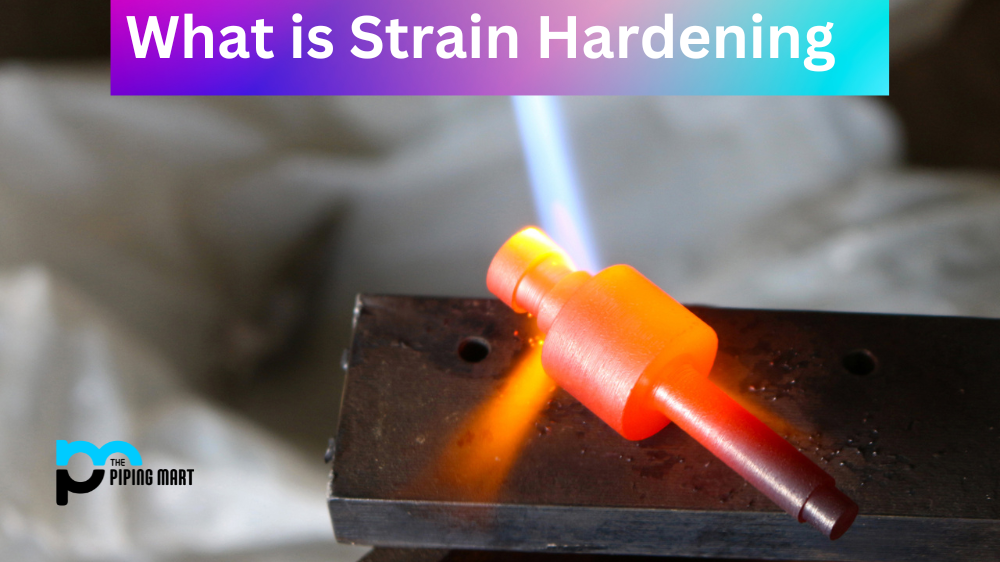Strain hardening, also known as work hardening, is a process of improving the strength of a material by increasing its plasticity. This process is common in metals and has been used for centuries to create stronger components for use in construction, engineering, and other industries. In this blog post, we will explore what strain hardening is and how it works.
How Strain Hardening Working
Strain hardening works by introducing deformation into a material which changes its internal structure and increases its strength. The amount of deformation required depends on the material being worked with – some materials require more deformation than others to achieve the desired results. It’s important to note that strain hardening isn’t achieved through heating or cooling but through mechanical action such as hammering or rolling.
In order to strain and harden a material effectively, it must first be annealed. Annealing is a process of heating and cooling that makes the material easier to work with without compromising its structural integrity. Once the material has been annealed, it can then be subjected to strain hardening, which involves applying force to deform the material until it reaches its desired level of hardness. For example, if you are trying to make steel harder for construction applications, you would apply a certain amount of force depending on the type of steel used until you reach your desired hardness level. It’s important to note that too much force can damage the material, so care should be taken when applying strain-hardening processes.
Strain Hardening Applications
Strain hardening can be applied in various ways depending on what type of material needs to be hardened and what purpose it will be used for. Steel is commonly used in construction applications where strength is paramount, so strain hardening can increase the strength of this metal before it’s used in structures like bridges or skyscrapers. Other metals, such as aluminium and copper, can also benefit from strain hardening before they are machined into components for automobiles or aeroplanes. Additionally, strain hardening can also be applied to plastics which are often used for injection moulding or 3D printing applications where strong parts are needed for precise operations.
Automotive Components
One of the most common applications for strain hardening is in the automotive industry. Automotive components such as engine blocks, transmission cases, and drive shafts are often made from strain-hardened metals. This is because these components must be able to withstand high levels of stress and strain without failing.
Aircraft Components
Another common application for strain hardening is in the aerospace industry. Aircraft components such as wings, fuselages, and landing gear are often made from strain-hardened metals. This is because these components must be able to withstand high levels of stress and strain without failing.
Pressure Vessels
Strain hardening is also commonly used in the construction of pressure vessels. Pressure vessels are containers that are designed to hold liquids or gases at high pressures. Due to the high pressures that they must withstand, pressure vessels must be made from materials that can resist deformation under load.
Pipelines
Pipelines are another common application for strain hardening. Pipelines are used to transport liquids or gases over long distances. Due to the high pressures that they must withstand, pipelines must be made from materials that can resist deformation under load.
Storage Tanks
Storage tanks are another common application for strain hardening. Storage tanks are used to store liquids or gases for later use. Due to the high pressures that they must withstand, storage tanks must be made from materials that can resist deformation under load.
Conclusion:
Strain Hardening has been around for centuries yet still remains one of the most effective ways to increase the strength of certain materials today. By applying mechanical force during annealing processes, engineers are able to create stronger components that are better able to withstand external forces without breaking down quickly over time. Whether you need strong parts for construction projects or precise components for manufacturing applications, understanding how strain-hardened materials work will ensure that your projects last longer and perform better than ever before! Intended Audience: Engineers working with metals or plastics who want an introduction to how strain-hardening works and why it’s essential in their field.

Pipingmart is a B2B portal that specializes in metal, industrial and piping items. Additionally, we share the latest information and information about materials, products and various types of grades to assist businesses that are involved in this business.




